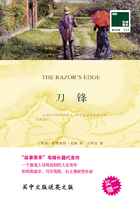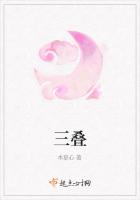"We had a lesson on insects today, Norah," said Willie, "and it was all new to us, and very wonderful. Fred has gone to find one or two insects now, so that we may have a talk about them. Here he comes; let us get ready for a chat.""Look!" said Fred, as they sat down at the table, "I"ve got a beautiful butterfly, a beetle, and a fine big blue- bottle fly. They will do well.
First of all, let us see why these little creatures are calledinsects.
"If you take any one of them in your hand, you will see that it appears to be deeply cut across in two places, so as to be almost separated into three distinct parts. This is why we call it an insect. The word insect means "cut into." The three parts are the head, the chest, and the belly.
"Look at it again carefully," he continued, "and you will see that the chest and belly parts are made up of hard horny rings. Teacher calls them ringed segments. A segment means apart. These segments are not complete rings, as they donot pass entirely round the body.
Each one is in two parts-an upper and an under half. The two parts are joined at the sides by a loose skin. In most insects there are three of these ringed segments in the chest and nine in the belly. They overlap one another, and give the body great freedom of movement.
"Teacher says the bodies of all insects are made up of ringed segments like these.""Now, Fred," said Willie, "shall we have something about the head next?""
"Yes, Will," answered Fred, "suppose you tell us all about it.""Well, first of all, the head is in one piece," said Willie. "It is not made up of ringed segments. There is no skull or brain case, because insects have no brains. Teacher says they have instead a number of knots of nerves in various parts of the body.
"The eyes are placed at the side of the head, not in front, so as to enable the insect to see aroundit in all directions. Teacher says they are most wonderful eyes, for each eye is really a close cluster of little eyes. Insects have many enemies. These sharp eyes are almost their only chance of escape.
"Oh, I was going to forget their feelers," he added. "You can see them, Norah, one on each side of the head. These are supposed to be organs of hearing and feeling. Now, Fred, can you think of anything else?""Well, we must not forget the mouth," said Fred. "In insects, as in other animals, the form of themouth depends on the kind of food. The beetle has a pair of strong biting jaws or mandibles and another pair of chewing jaws, and so have all insects that live on solid animal or vegetable food. They bite off their food with their mandibles, and chew it with their chewing teeth.
"Other insects, such as the bee, the common house-fly, and the butterfly, live on juices, which they suck up through a trunk. They have no jaws.
"Remember one thing. Whenever insects have jaws they always open sideways, and not up and down as ours do."SUMMARY
The word in-sect means "cut into." The body is in three parts-head, chest, and belly, and is made up of ringed segments. Insects have no brain. The eyes are at the sides of the head; each eye is a cluster of small eyes. Some insects have jaws for biting their food. The jaws always open sideways. Some have trunks for sucking up the food on which they live.
Lesson 42















